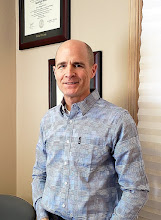It's easy to ignore this issue, falsely believing government agencies and industry will protect us. Unfortunately they are slow to act. In addition, since our exposure to harmful chemicals isn't always obvious it's easy to downplay the threat. Studies on total body burden (levels of harmful chemicals in our bodies) show that all of us carry as many as 200 different potentially harmful chemicals inside. Even newborns come into this world already carry a burden unintentionally transferred from mom. For example, small children have toxic levels of PBDE (polybrominated diphenyl ethers) a common flame retardant used in the US in mattresses and elsewhere. Though voluntarily discontinued around 2004, most people still have products containing PBDE in their homes. Kids often have body burdens many times worse than adults. This is because pound for pound they are consuming and breathing much more volume than an adult. Their rapid growth means they are even more sensitive to the chemicals; they have immature guts, immune systems, and nervous systems.
A study a few years back in the Seattle area looked at the chemical load in children of parents who purchased predominately Certified Organic produce versus conventional produce. They tested for organophosphates, a family of pesticides that are neurologically harmful. Kids fed Organics had undetectable levels of pesticide markers in their urine and saliva, whereas those eating conventional produce had high levels. They also showed after switching kids to an Organic diet, after 36 hours the pesticides were undetectable.
One of the prime sources for chemical exposure is sadly our homes. Do a survey in your own home. Take an inventory of the chemical laboratory under your sinks, in the laundry room, and in the garage. Do you use pest-control services? Do you use antibacterial soap? Read the labels on your sunscreen, shampoo, laundry detergent, and even the packaged foods in your pantry. A few chemicals here and there might be fine, but the scale has tipped and increasing dis-ease is the result: infertility rates, birth defects, cancer, neurological, and immune-related disease are just a few examples.
Here are a few areas to consider.
With summer approaching reevaluate your sun-exposure plan. Most sunscreens contain harmful ingredients, notably the hormone disruptor oxybenzone -also written as benzophenone-3. Other ingredients such as methylparaben, propylparaben, ethylparaben, propylene glycol, synthetic fragrances, and dyes may be harmful. It’s interesting to note that most sun blocks containing harmful active ingredients may actually increase the potential for cellular damage and skin cancer. After an hour of sun exposure, despite preventing sunburn, the UV energy is directed deeper into the skin. The best option is to slowly expose your skin to the sun. If you have to be out for extended periods either cover with clothing and hats or use natural sunscreens with titanium dioxide and zinc oxide. Remember that sunshine is necessary for good health. To little or too much (getting sun burned) is bad.
Learn what produce you should purchase Certified Organic (or not at all). See the list composed by the Environmental Working Group (EWG.org) showing the worst to best produce for herbicide and pesticide levels. A simple rule of thumb is to buy Organic fruits and vegetables that you eat the skin (peaches, nectarines, strawberries, plumbs, grapes). Ones you peel that are conventionally produced usually have lower residue levels. See the Dirty Dozen and Clean 15 list at: foodnews.org. Another useful tip I learned is that you can tell from those annoying stickers they put on fresh produce, which are Organic, Conventional, and GMO (genetically modified). Those with a five digit number starting with “9” are Organic, those starting with “8” are GMO, and those with a four digit number are conventionally grown.
Look for ways to reduce your use of plastic, especially in terms of your food and drinks. Not all plastic is equally toxic, but avoid PVC, DEHA, adipate and phthalate, typically in the softer plastics and cling wraps. There is PVC-free cling wrap; a source I found indicates Glad and Saran are, as is Natural Value and Diamond Food Wrap. Also avoid polystyrene (LDPE), labeled “PS” #6 inside the recycle symbol. Better plastic container options are #’s 2, 4, and 5, also labeled as “PET,” “HDPE,” and “PP.” Never heat or store hot food in plastic. Microwaving in plastic or with cling wrap is really bad idea. Oily and foods higher in fat will also interact more with plastic containers. If possible use glass, ceramic, or stainless steel. Plastic containers breakdown over time; if they begin to show wear it’s time to recycle.
Lastly, one of the most pervasive problems I see in homes and offices is the use of antibacterial soaps. Even the American Medical Association recommends avoiding products with Triclosan, the common agent in liquid hand soaps. Not only are chemical antibacterial agents unnecessary to adequately clean your hands, but Triclosan is toxic to the environment and your body. Most notably it suppresses proper thyroid function. By the way, don’t eat conventional strawberries, which are treated with methyl bromides, another thyroid-toxic compound.
Though we all live in a modern chemical soup, little bodies are much more sensitive to the many toxic chemicals that are now so pervasive. We need to protect our kids.
Resources
http://www.foodnews.org/fulllist.php
http://www.cosmeticsdatabase.com




